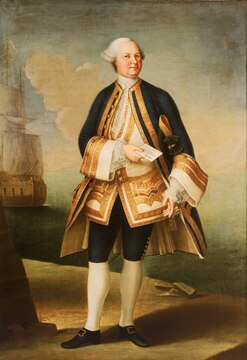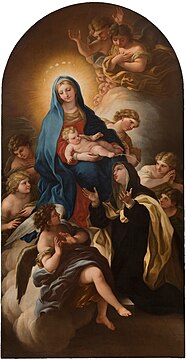You can help expand this article with text translated from the corresponding article in Italian. Click for important translation instructions.
|
| Violante Beatrice Siries | |
|---|---|
 Self-portrait (date unknown) Self-portrait (date unknown) | |
| Born | 26 January 1709 Florence, Italy |
| Died | 20 April 1783 Florence, Italy |
| Nationality | Italian |
| Known for | Painting |
| Spouse | Giuseppe Cerroti |
| Patron(s) | Medici family |
Violante Beatrice Siries (1709–1783) was an Italian painter. She was born in Florence and, from 1726, studied under Hyacinthe Rigaud and François Boucher in Paris. Upon returning to Florence she married Giuseppe Cerroti, about whom nothing is known, and continued her artistic studies under Francesco Conti.
Life and work
Siries was talented in several genres, but established herself as a portraitist. She succeeded in gaining the patronage of the Medici family. After the death of Giovanna Fratellini in 1731, she also received support from the Medici's financial partners, the Gondi family. She often travelled to Rome and Vienna to execute commissions.
Her most ambitious work was a fourteen figure family group of the Emperor Charles VI, the father of Maria Theresa of Austria (1735). Three of her self-portraits are preserved in the Uffizi Gallery.
In later life she became a respected teacher. Her pupils included Anna Bacherini Piattoli.
She is one of the artists whose works are being restored by the Advancing Women Artists Foundation. She was also mentioned in Jane Fortune's book Invisible Women: Forgotten Artists of Florence, which discusses female Florentine artists.
Among her paintings :
- The Sleeping Seamstress (leaning on her sewing box).
- Saint Francis of Assisi
- Young Ladies in a Garden Landscape
- Captain Edward Hughes
- The Virgin Mary Presenting the Baby Jesus to Santa Maria Maddalena dei Pazzi
- Double portrait of Peter Leopold of Habsburg and Maria Luisa of Spain
Selected paintings
-
 Young Ladies in a Garden Landscape (c.1735)
Young Ladies in a Garden Landscape (c.1735)
-
 Count Claude Alexandre de Bonneval (1750)
Count Claude Alexandre de Bonneval (1750)
-
 Captain Edward Hughes (1761)
Captain Edward Hughes (1761)
-
 Saint Francis of Assisi (1765)
Saint Francis of Assisi (1765)
-
 The Virgin Mary Presenting the Baby Jesus to Santa Maria Maddalena dei Pazzi (1767)
The Virgin Mary Presenting the Baby Jesus to Santa Maria Maddalena dei Pazzi (1767)
-
 Young Man Reading the Notizia del Disegno (1775)
Young Man Reading the Notizia del Disegno (1775)
References
- Soguel, Dominique and Squires, Nick. "Out of the shadows: Historical female artists finally shine." Christian Science Monitor 8 Feb. 2019 ("Opposing Viewpoints in Context")
- Rachel Donadio, "Can a Museum Change Italy", in: The New York Times, 21 Aug. 2016
- Detailed description (in French) @ ANTIC Swiss
- Full-length portrait. She also created a half-length with him holding a telescope, belonging to the National Trust, Tredegar House
Further reading
- Germaine Greer; The Obstacle Race: The Fortunes of Women Painters and Their Work, Tauris (2001) ISBN 978-1-86064-677-5